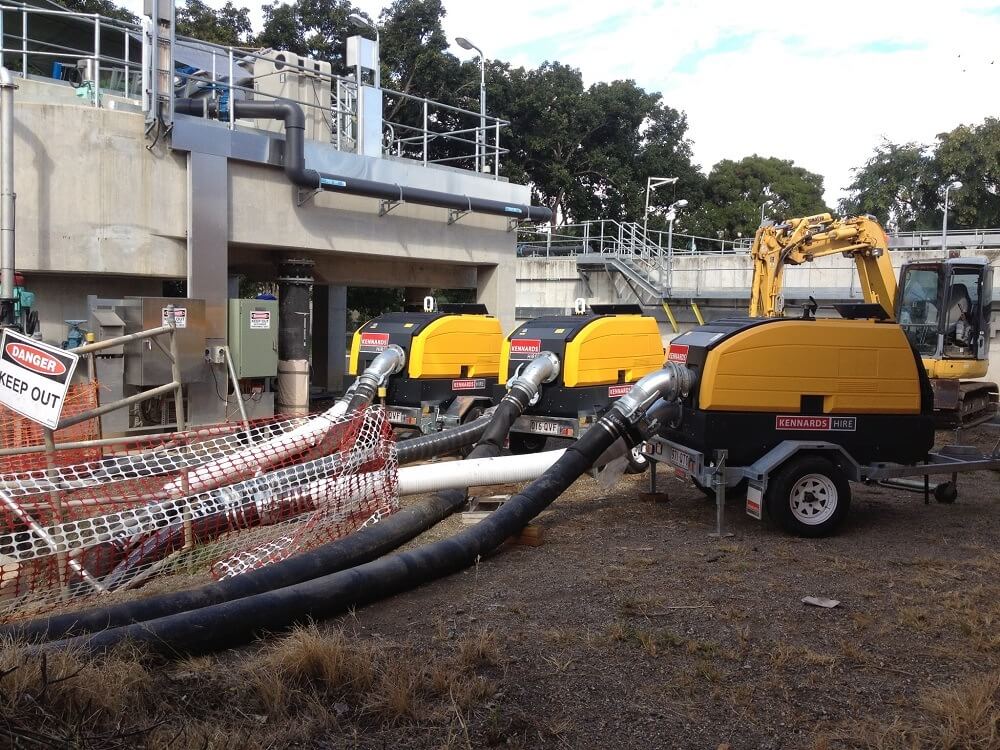Finding the Ideal Pump for Your Situation
Get Inspired
There are a number of situations where you might need a pump to drain water, at home or on a worksite.
But before you hire a pump, you need to know a few things about your situation so that you make sure you get the best pump for the job.
- What volume of water do you need to remove?
- How far away is the discharge point or drain?
- Is the discharge point located significantly higher than the water?
- Is the water clean, or muddy and filled with debris?
- Does the water contain raw sewage?
- Do you have electricity available to power the pump?
Watch our Video about these questions or read further on.
If you have a lot of water, you need a more powerful pump. You can calculate the volume of water by multiplying the water’s length by width by depth. This information will be critical when selecting a pump. Find out what the pump’s flow rate is in litres per hour to estimate how long it will take to empty the area.
Keep in mind that the same type of pump can’t be used in debris-filled water that you would use for relatively clean water, such as from a pool. And if you’re dealing with sewage, you will require a specialist pump.
If you need to hire a pump that runs on diesel of petrol, it must be operated in a well-ventilated space to disperse fumes.
The truth is, no one pump suits every situation. Selection is always on a case by case basis, in consultation with your Kennards Hire branch staff.
Let’s look at the pumps available for removing unwanted water in more detail.
Deciding on pump size
Pumps comes in several sizes and are measured by the diameter of the inlet hose, from 1 to around 12 inches.
Electric submersible pumps are great for flooded basements or ground floors. You can fit the small ones in the boot of your car and run them off your home electricity supply.
There are also bigger electric pumps that run on 3-phase power for large-scale applications.
And if you are without power due to a blackout or remote location, there are pumps that run on diesel or petrol.
How big is the job?
With very shallow water, pumps known as “puddle suckers” can operate in as little as three millimetres. However, they can only operate clean water.
This makes them great for draining a swimming pool or flooded basement. They can be transported in the boot of a car and are designed to be submersed in the water.
Then there are commercial pumps that remove water from excavated pits, dams and public swimming pools. These towable and truck-mounted pumps have 6 to 12-inch diameter hoses for moving large volumes of water.
There are also pumps that can remove water containing solids such as mud and sludge. There are even pumps designed to remove raw sewage.
Remember that all pumps need a minimum depth of water to work, so make sure you measure the job at hand. Also consider how high you need to pump the water. If it is more than 10 metres below your outlet point, you may need a more powerful pump.
Where to send the water
Where can you send your unwanted water? Well, if it’s relatively clean, you can pump it onto the garden or down a stormwater drain.
However, you cannot pump contaminated water into the stormwater system or onto your garden. This applies to water containing oil or chemicals. If the water is contaminated with raw sewage, contact a plumber to find out how to safely disperse it.
Kennards Hire offers a range of pumps suitable for smaller jobs as well as moving large volumes of water. There are also pumps available for those messier jobs with debris-laden water or light slurry.
Talk to your local branch for more information on the right pump for your requirements, or get in touch with our specialist Pump & Power division for large-scale or complex jobs.

